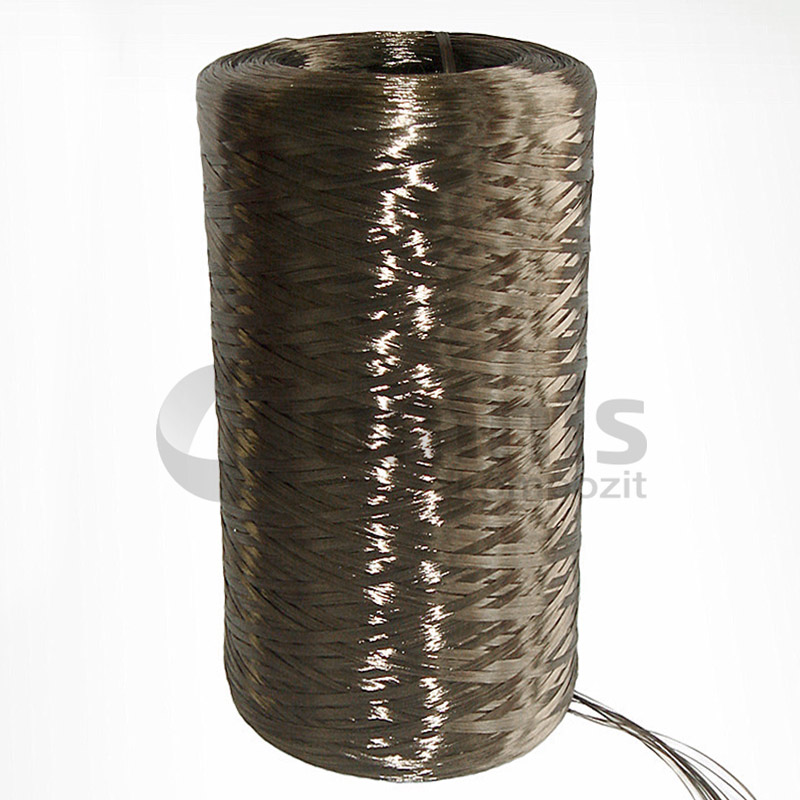Basalt Fiber Reinforcements
Basalt fiber is a material made from extremely fine fibers of basalt, which is a volcanic rock composed primarily of plagioclase, pyroxene, and olivine. It is produced through the process of melting basalt rock at high temperatures, then extruding it through small nozzles to create continuous fibers. This process results in a material that offers a combination of high strength, durability, and thermal stability. Basalt fiber is recognized for its natural resistance to environmental exposure and its ability to enhance the performance of composite materials. Its properties make it an excellent choice for a wide range of applications, from construction and automotive to aerospace and marine industries.

Basalt Single End Roving
View Product
Basalt Fiber Trimming
View ProductHow is basalt fiber produced?
Basalt fiber is produced by melting crushed basalt rock at temperatures around 1,400 to 1,600 degrees Celsius. The molten rock is then extruded through tiny nozzles to form continuous filaments of basalt fiber. This process can be adjusted to produce fibers of various diameters, depending on the intended application. The resulting fibers are cooled rapidly in a controlled environment to preserve their material properties. This production method makes basalt fiber a highly efficient and eco-friendly alternative to traditional reinforcement materials, as it utilizes natural rock without the need for other chemical additives.
What are the main advantages of using basalt fiber reinforcements?
The main advantages of using basalt fiber reinforcements include their high tensile strength, excellent thermal stability, and superior chemical resistance. Basalt fibers also offer significant environmental benefits, as they are made from natural volcanic rock and require less energy to produce compared to other synthetic fibers. Their resistance to moisture, UV radiation, and corrosive substances makes them ideal for use in harsh environmental conditions. Additionally, basalt fibers have a high elastic modulus, providing excellent reinforcement in composite materials without significantly increasing weight. These properties make basalt fiber reinforcements a compelling choice for a wide range of industrial applications.
How do basalt fiber reinforcements compare to traditional fiberglass?
These reinforcements have several benefits over traditional fiberglass, such as higher tensile strength, improved thermal stability, and greater resistance to chemical and environmental degradation. Unlike fiberglass, made from silica and other minerals, this material is derived from natural volcanic rock, offering an eco-friendlier alternative. They can endure higher temperatures and perform lower thermal conductivity, suitable for applications needing thermal insulation or fire resistance. Additionally, they absorb less moisture than fiberglass, enhancing their longevity and performance in various uses.
Can basalt fiber be used in both composite and non-composite applications?
Indeed, it functions as a reinforcement agent in composite materials, boosting the mechanical properties of plastics, resins, and concrete. Its strength and environmental resistance benefit automotive, aerospace, construction, and marine applications. For non-composite uses, it’s involved in producing textiles, insulation materials, and fireproof products due to its thermal stability and chemical resistance. Its adaptability allows for a broad range of applications, from structural reinforcements to high-performance fabrics.
What are the environmental benefits of using basalt fiber?
Benefits include its natural origin, energy-efficient production, and recyclability. Originating from abundant volcanic rock without additional raw materials, it lessens the environmental impact associated with mining and processing. Its production emits lower levels of CO2 and pollutants compared to synthetic fibers. Plus, products can be recycled or disposed of safely, contributing to a sustainable lifecycle for materials in construction and manufacturing.
How does basalt fiber enhance the mechanical properties of composites?
It improves composites by offering high tensile strength, stiffness, and impact resistance. As a reinforcement, it evenly distributes loads across the composite, enhancing overall strength and durability. Its inherent resistance to chemical and environmental degradation also extends the longevity and reliability of materials. Integrating it into composites allows for superior performance, suitable for demanding aerospace, automotive, and construction industries.
What are the thermal properties of basalt fiber composites?
These composites performing high thermal stability, low conductivity, and good resistance to thermal shock, can withstand up to 650-700 degrees Celsius without significant strength loss, suitable for high-temperature applications. Their low thermal conductivity makes them effective insulators, preventing heat transfer and enhancing energy efficiency in buildings and industrial equipment. Moreover, their thermal shock resistance ensures reliable performance in environments with rapid temperature changes.
Can basalt fiber be used in high-temperature applications?
Yes, due to its excellent thermal stability and heat resistance, it’s suited for high-temperature uses. It endures continuous exposure to 650-700 degrees Celsius, applicable in fire barriers, insulation materials, and protective clothing. Its ability to maintain mechanical properties at high temperatures makes composites ideal for automotive, aerospace, and industrial components operating in extreme thermal conditions, enhancing product safety and durability.
How does the cost of basalt fiber compare to other reinforcement fibers?
Its cost is competitive, generally aligning with other reinforcement fibers like fiberglass and certain carbon fiber types. While it may be slightly pricier than standard E-glass fiberglass, it often presents a more cost-effective option than high-performance fibers like S-glass or carbon fiber, particularly when considering its mechanical and thermal properties. Its price advantage turns out to be more convenient considering durability, environmental resistance, and lower lifecycle costs. As production technologies advance and demand grows, its cost is anticipated to become even more competitive, offering an attractive alternative for various applications.
What are the common applications of basalt fiber reinforcements?
These reinforcements are utilized in automotive and aerospace components, construction materials, marine structures, and wind turbine blades. They contribute to the production of high-strength, lightweight composite panels, pipes, and beams, offering enhanced durability and environmental resistance. In the automotive sector, composites are used for body panels, exhaust systems, and brake linings due to their thermal stability and mechanical properties. In construction, they contribute to concrete reinforcement, bridge construction, and insulation, providing strength, durability, and energy efficiency. Their versatility and performance benefits make them suitable for a wide range of industrial and commercial applications.


